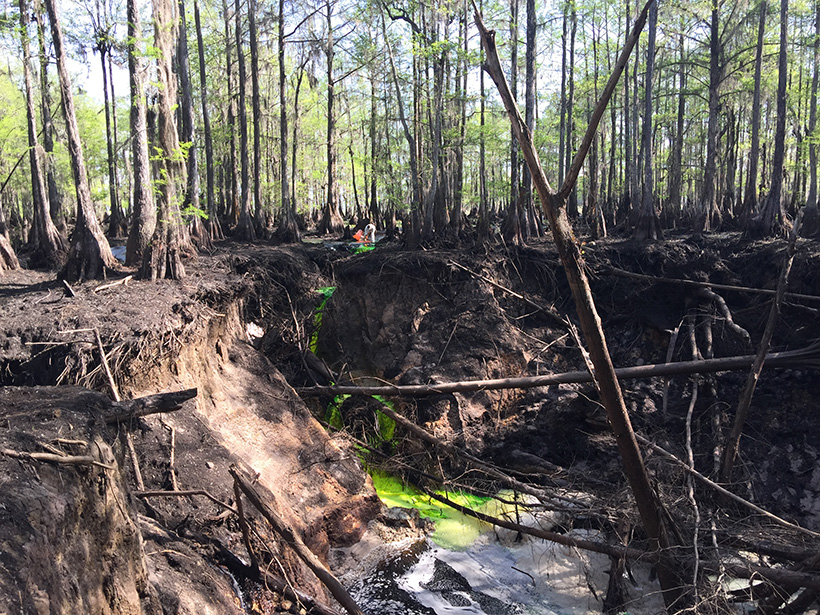The hydraulic connection between a sinkhole and a natural spring—the longest and largest yet documented—could help reduce the guesswork in mapping karst aquifers.
Florida
The Evolution of Observed Hurricane Eyewall Shapes
The observational evidence of the wind field of Hurricane Michael using radar imagery showed an eyewall structure evolution with elliptical, triangular, and square shapes for the first time.
Florida Coastlines Respond to Sea Level Rise
For more than a century, carbon burial rates have been increasing on some southern Florida coasts. Scientists now verify this trend and propose an explanation.
Lost in the Everglades
Living in Geologic Time: An unintentional adventure in the River of Grass shows how Florida has changed dramatically over 15,000 years of human habitation.
Hurricanes Hit Puerto Rico’s Mangroves Harder Than Florida’s
The scale and pattern of damage to the Puerto Rican forests suggest a complex interplay between wind, land, and sea.
“Glass Pearls” in Clamshells Point to Ancient Meteor Impact
Research suggests that the spherical structures, smaller than grains of sand, may be microtektites, but additional investigations are needed to verify their identity.
Dolphins in Florida Show Exposure to Phthalate Contaminants
Scientists have detected exposure to phthalates among a majority of bottlenose dolphins sampled in Sarasota Bay, Florida (2016–2017), including some with levels comparable to those observed in humans.
A Better Way to Probe Peat
Florida scientists use ground-penetrating radar to image underground carbon stores in the Disney Wilderness Preserve.
Hurricane Irma Tears Across Caribbean, Heads to South Florida
Florida residents prepare for potentially catastrophic winds and flooding.
Scientists Find Dead Lightning Branches That Come Back to Life
The detached bursts of brilliance might explain why the lowest point of a lightning bolt will sometimes suddenly brighten by up to 50% and double its speed as it hurtles to Earth.










